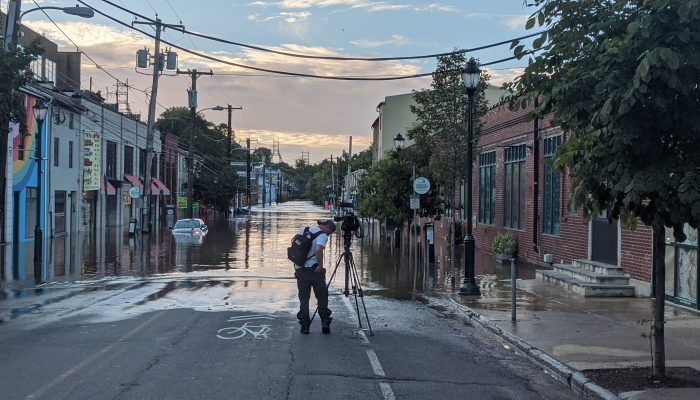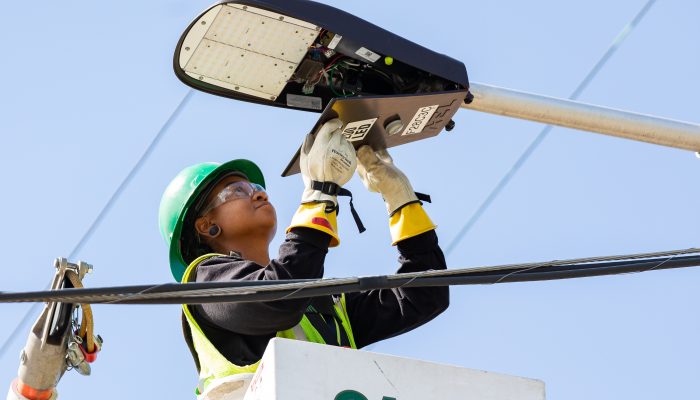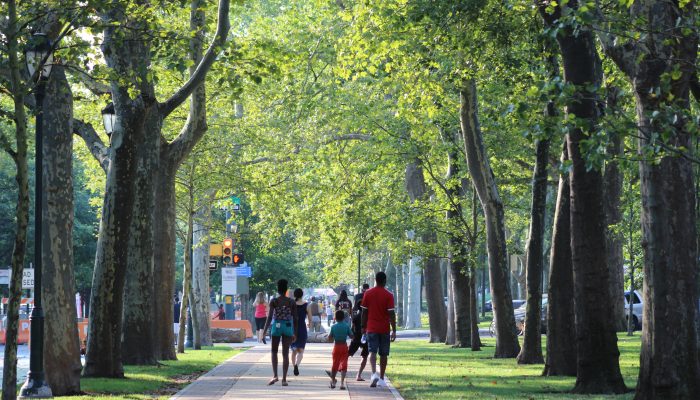As identified in the City of Philadelphia’s All-Hazard Mitigation Plan (2022), flooding is one of Philadelphia’s greatest, most impactful natural hazards. Of the eighteen Presidential Disaster Declarations that affected Philadelphia between 1965 and 2022, twelve (approximately 67%) were a result of flooding or flood-related impacts from hurricanes, tropical storms, or other severe storm systems. This data does not capture smaller storms that did not meet thresholds for Presidential declarations but caused significant losses, including Tropical Storm Isaias in August 2020. This storm, and the flooding that resulted, heavily impacted Southwest Philadelphia’s Eastwick neighborhood and Northwest Philadelphia’s Manayunk neighborhood, the two areas in Philadelphia with the highest number of NFIP repetitive loss claims. Still, flooding that does warrant Presidential declaration has incurred damages that have not yet seen recovery – most notably in Manayunk following Hurricane Ida in September 2021. Flood losses will only continue to increase as Philadelphia experiences the impacts of climate change. Recent projections forecast warmer temperatures and changes in precipitation patterns in Philadelphia, which will impact the strength and duration of extreme weather events (Growing Stronger report, 2015).
Given the variety of flooding sources impacting Philadelphians – be it riverine, infrastructural, or coastal – a single citywide solution for flood risk mitigation is not applicable. The City of Philadelphia (“City”) is considering several neighborhood-specific infrastructure interventions, such as levees and stormwater tunnels, to mitigate future flooding. Despite the potential mitigating effect of these major investments, communities remain no less vulnerable to flooding today; the summation of scoping, design, and implementation timelines for such projects may amount to a decade or more. Thus, interim protection of at-risk properties is critical to citywide preparedness. Property-level mitigation, via structural and non-structural means, can be completed within significantly shorter timelines and may substantially reduce the magnitude of damage.
To successfully implement property-level mitigation, several barriers and complexities must be addressed. Structural interventions are particularly challenging in Philadelphia because of the prevalence of row homes, a series of houses connected by side walls, often having different owners. Major structural alterations or whole-building initiatives (e.g., demolition-rebuild or buyout-relocation) would require all owners in a row to agree and coordinate. Non-structural mitigation options (e.g., wet floodproofing or flood barriers) have higher feasibility and may reduce the damages incurred, but this approach allows residents to remain-in-place where they are still exposed to flood hazard. Above all, community-led mitigation efforts must be at the center of flood mitigation efforts. Historical environmental injustices and economic disinvestment in neighborhoods such as Eastwick emphasize the importance of including resident voices in the development of mitigation strategies and empowering residents in decision-making processes.
Several federal funding opportunities can be leveraged to mitigate flood risks borne by private homes and businesses, e.g., Community Development Block Grants (CDBG), Flood Mitigation Assistance (FMA), and the Building Resilient Infrastructure and Communities (BRIC) Program. However, applying for these funds can be complex and time-consuming and requires significant coordination between the City, residents, business owners and other stakeholders. Channeling federal funds to property-level work is also a complicated process that will require an organized city structure to facilitate program design, operations, and management. The City seeks support for developing a multi-option integrated flood mitigation program to better enable property owners to reduce their flood risks.
The City, through the Office of Sustainability, is issuing a Request for Proposals (RFP) to solicit the design of a property-level mitigation program for repetitive loss communities in Philadelphia in the coming weeks. Such a program must utilize specialized teams to secure and manage grants; identify staffing and expertise needs; address financial, legal, and equity considerations; emphasize community outreach and input; support synergies between program components (buyouts, relocations, elevations, retrofits, floodproofing, insurance accessibility); and provide individualized case management. The program should be both accessible and widely applicable to owners of at-risk properties and bridge the gap between the sizable federal programs available and the Philadelphians in need. Importantly, a property-level mitigation program should, at its core, align with best practices of ensuring equity throughout program development, intake, and successful completion. A multi-option, integrated program that accounts for circumstances unique to Philadelphia, its history, and infrastructure is essential to the City’s flood risk mitigation efforts. In the context of this forthcoming RFP, the proposed program should highlight key resources and systematic structures that support these values and build institutional capacity for implementation.




